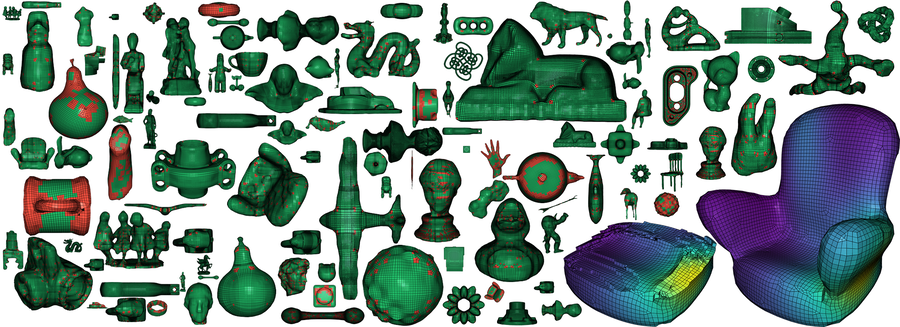Poly-Spline Finite Element Method

Abstract
We introduce an integrated meshing and finite element method pipeline enabling solution of partial differential equations in the volume enclosed by a boundary representation. We construct a hybrid hexahedral-dominant mesh, which contains a small number of star-shaped polyhedra, and build a set of high-order bases on its elements, combining triquadratic B-splines, triquadratic hexahedra, and harmonic elements. We demonstrate that our approach converges cubically under refinement, while requiring around 50% of the degrees of freedom than a similarly dense hexahedral mesh composed of triquadratic hexahedra. We validate our approach solving Poisson’s equation on a large collection of models, which are automatically processed by our algorithm, only requiring the user to provide boundary conditions on their surface.
Citation
@article{Schneider:2019:PSF,
author = {Schneider, Teseo and Dumas, J{\'e}r{\'e}mie and Gao, Xifeng and Botsch, Mario and Panozzo, Daniele and Zorin, Denis},
title = {Poly-Spline Finite-Element Method},
journal = {ACM Transactions on Graphics},
volume = {38},
number = {3},
month = {3},
year = {2019},
url = {http://doi.acm.org/10.1145/3313797},
doi = {10.1145/3313797},
publisher = {ACM}
}
Acknowledgments
We are grateful to the NYU HPC staff for providing computing cluster service. This work was partially supported by the NSF CAREER award 1652515, the NSF grant IIS-1320635, the NSF grant DMS-1436591, the NSF grant 1835712, the SNSF grant P2TIP2_175859, a gift from Adobe Research, and a gift from nTopology.